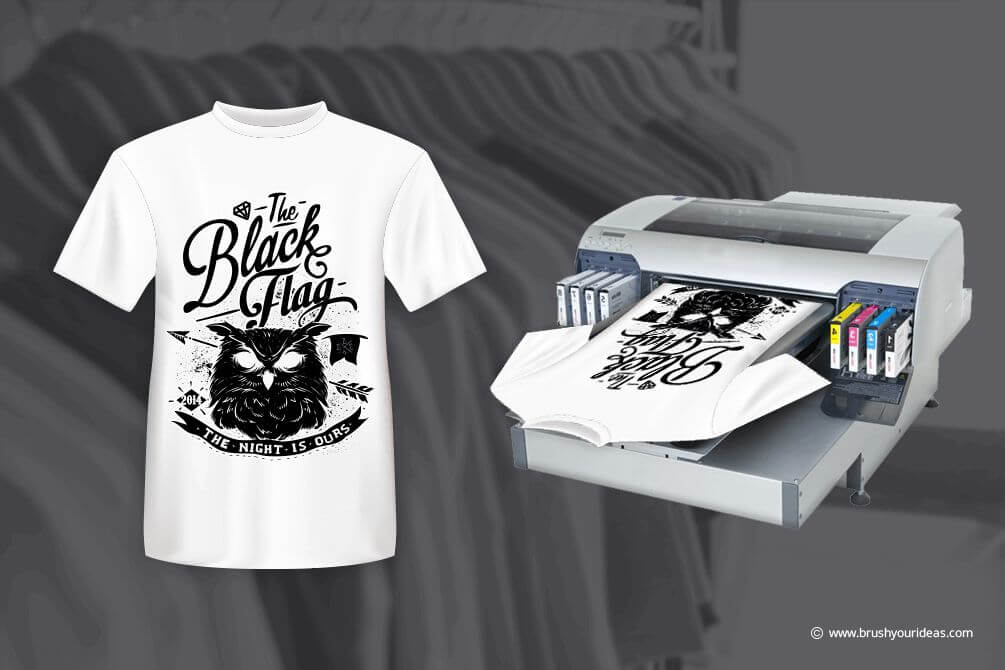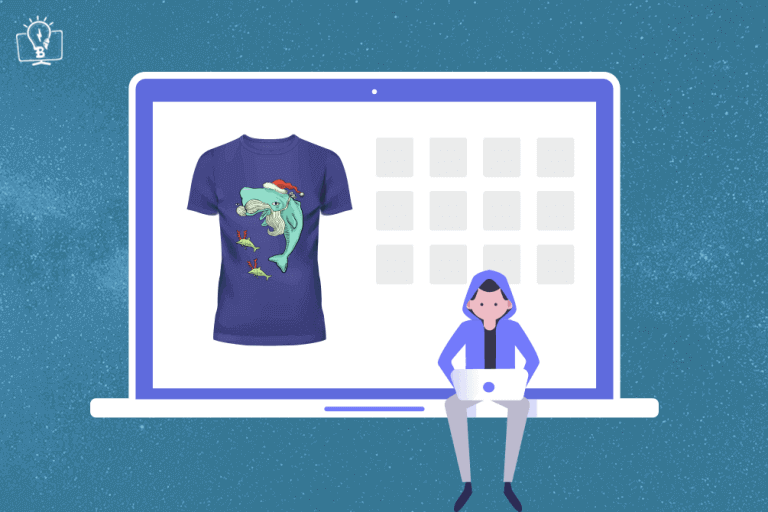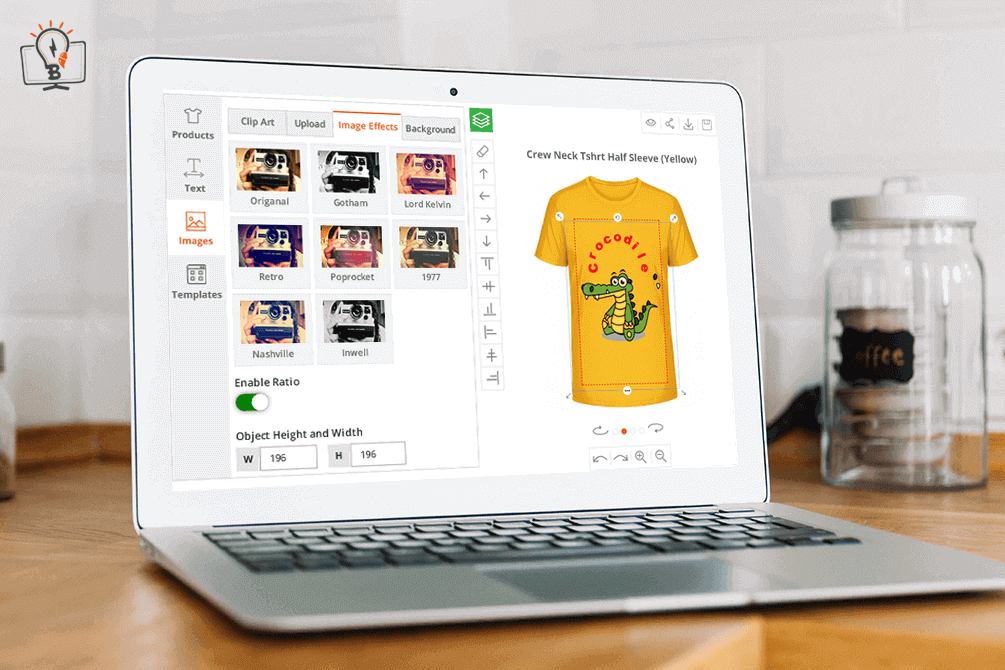When we think of start-ups, we imagine disruptive technologies and larger than life personalities. But if you can create something meaningful, that’s great as well. Not every idea has to change the world. However, it is important to define the idea, your vision behind the idea and your commitment towards it.
We’re entrepreneurs and we believe in using the collective expertise of our teams to solve real-world problems. The business aspect, though important, is secondary to the problem-solving. And upon this foundation, we have built businesses, big and small. So, when you’re trying to come up with a start-up idea, just think how you could use your skills and resources to envision and create a better future. The money will follow naturally.
That being said, what specific problems can you solve with your printing solution? Isn’t everything been said and done in the printing business? Well, there’s one more crucial factor that needs to be considered.
In every industry, from time to time, there emerge ideas that are truly revolutionary. Peter Thiel, co-founder of PayPal and a venture capitalist, calls this going from zero to one.
That idea, in today’s printing industry, is customizable goods. A wide range of goods, ranging from coffee mugs to phone cases, can be printed upon. Allowing customers to design their own customized goods can be a great USP (unique selling proposition).
Our task here is to build a business model around this idea. After considering all relevant factors, we shall create an actionable set of tasks that can be used for any printable material. We shall, however, stick to printable t-shirts.
Understanding the Market

Printed shirts are popular with youngsters who want to express their individuality. However, most large orders are for resale, uniforms, and merchandise.
Let us try to understand both these segments individually. First, consider the B2C clients. These are more likely to be youngsters between the age of 18 and 28, though the range could expand with the product adoption cycle.
Adoption cycle is the theory that describes how a new product sees gradual acceptance by the society with the passage of time. It is important to understand this as it affects how you market the product.
Another determining factor is going to be the location. Look for the top educators and employers in your country. Their concentration will be significantly higher in certain cities.
The B2B clients, on the other hand, are going to have a more or less even distribution. The demographics of this are also going to vary. For example, an artist looking to monetize by selling some merchandise is as likely to order custom shirts as a factory owner who wants his logo printed on the workers’ uniforms.
Therefore, one may argue that the business can target many different segments. It is, however, advisable to have a specific target as it keeps your marketing and sales efforts focused. You can expand your reach based on the growth of your business.
We shall start with B2C clients as the order will be in small batches. This means that the markup is higher and the initial investment is less. The reason behind this is to learn about the business with relatively less risk.
Business Opportunities
The simplest way of identifying business opportunities is to go back to problem-solving. If you have a clear understanding of the grievances of your target market, there will always be problems to solve.
Fact is people are buying customized products already but being able to design the said products themselves at a reasonable price is something that is still untapped.
Here, the concept of ‘last mover advantage’ must be mentioned. People say that first movers have an advantage over the competition. A contradicting point of view is that the last mover, the business that implements the idea so well that there is no significant competition that rises after that.
The advantage they have is that the idea has already been tested and accepted to a certain level. People are aware of the concept and there is a demand. And, they already know the flaws in the concept because they observed the competition.
While considering the business opportunities, you may ask yourself why a customer would come to you when the exact same product could be available at other vendors. The answer is simple. Recommendation.
You’ll have to hustle for the first few clients. Look out for people who could benefit from your product and when you land a sale, make it the perfect experience for the client. Give timely updates. Be available on the phone. Make sure everything is the way it should be; right from the fabric to the packaging. Don’t aim for a good review. Aim for a five-starred review.
And when you work with that perfection, people will come to you. More so if you offer incentives like discounts on referrals.
This is another reason to target specific segments and develop a thorough understanding of their needs and grievances. You can even use this knowledge to expand the scope of your business at a later stage.
Product
There is a lot of demand for custom printed tee-shirts. They make great gifts, can be sold as merchandise or worn by geeks and fanboys. Consequently, there is a lot of demand for a web-to-print store.
That gives us a basic idea about the product.
Moving on to customization, the t-shirt design tool must allow users to do basic manipulation of text and images. Some basic text features like curved text, text shadows, text outline are a must. Similarly, a choice of image filters must be available. It should also support various commonly used file formats.
On your end, it should support different printing methods. This is necessary because you may use different methods depending on the quantity.
So, the actual product is a combination of the two things mentioned above, the customizer and the tees.
Resources
If you are already in the printing business and merely adopting web-to-print, you may already have all the hardware and machinery in hand. Initially, though, it is not necessary to buy the machinery. You can get the shirts printed by a printer.
You’ll need a domain, and hosting service. Some hosted solutions are also available online but they have their own limitations with respect to the layout and design.
Next, you’ll need a t-shirt design software. This is the actual customizer that allows your users to prepare their designs and shows a mock-up of how it would look.
You’ll need a storefront for your website. Several storefronts are available online and most of them have trials and/or demos available. Pick one that fulfills your needs and fits your budget. Make sure it has responsive themes, blog integrations, and product search. This is important as the customer should be able to navigate the website easily irrespective of the device he’s viewing it on.
If you are going to be shipping worldwide, make sure you have multi-lingual and multi-currency support. This is the extra convenience you can offer to your international clients which can encourage them to choose you over a competitor.
When scaling operations, you are also going to need a logistics partner and an ERP to make the inventory and order management easier. But in the initial stages, they aren’t mandatory. However, it is highly recommended that you buy the storefront from a firm that also makes ERPs as this will make their integration smooth and easy.
Operations
While the operations for this particular business are not very complex, it is important to have clarity about them. Especially when there are multiple participants involved, this becomes even more important.
Therefore, a plan documenting the day to day operations becomes as important as the strategic plan. It is as they say, ‘measure twice, cut once.’
The strategy is to start out with individuals. Once you get the hang of it, target artists selling merchandise. These designs are the most shareable ones that you’ll get. Use them to capture the attention of other individuals and companies.
We can deduce the operations plan from that. It would generally go through the following process:
- Procure the raw material. Though you must print the shirts in batches, solid colored shirts are available from wholesalers at a cheap price.
- Get sample prints from different printers and develop an understanding with him. If you offer an exclusive contract, you can get a solid bargain for the prints.
- The first step in any sales cycle is known. When you sell your first batch, other potential clients notice the product. A small percentage of them may approach you for similar prints. In this way, the client base increases at a rapid rate once you start gaining momentum. This is going to be your organic growth and you must have the resources to meet the demand.
- The last step is to get a repeat order. This is the confirmation of the hypothesis that is, this business idea.
Marketing

Marketing is going to be a crucial element of your web-to-print store. Make sure you give it due time and importance. But you will have to think beyond cold calling, which is not an effective way of marketing. If it is not your area of expertise, you may need to hire a consultant to take care of it.
For generating organic leads in the long term, and to spread brand awareness, you must make steady efforts in digital marketing. This is doable in the following ways:
- Be active on social media. Post designs. Ask customers to tag you in the product photos.
- Visit various communities and discussion forums related to art. Let them know that they can make use of your services to print and sell their designs.
- Use influencer marketing. Send samples and offers to social media influencers.
- Include a blog page on your website to get inbound traffic.
Of course, at some point, you will have to be more direct and publish ads. A study of your actual customer base, as opposed to projected ones, will give you a detailed insight into the kind of advertisements you need to create.
For example, if most of your clients are artists, you should post ads on picture-based social media such as Instagram. On the other hand, if your maximum orders are coming from industrialists, target LinkedIn. A good general way would be to run a PPC campaign through companies like Google.
Financial Projections
If you’re bad with numbers, you’ll probably defer planning your finances but it is not that difficult to understand. Let us start with the pricing of the product and build our projections upon that. There are many different points of view on how to price your product. Some say you should charge the market average. Others say you should calculate the cost and add the markup you decide upon. But the truth is that there are going to be factors that are non-quantifiable.
How do you divide the cost of your t-shirt printing software? The tee shirt cost will vary with the batch size of your purchase. The printing method may vary with the quantity and the shipping cost with location. All things leading to a difference in cost estimation.
Therefore, the best you can get is an estimate. We’ll come back to this in a bit.
First, we must answer how you should price your products. And for that, there is only one strategy that works. Don’t reveal the prices publicly. You may offer single prints at a fixed price that you can calculate as per the above-mentioned factors. But for bulk orders, give an individualized estimate based on all these factors. And leave a margin for negotiations.
Coming back, the above-mentioned is going to be useful when you’re calculating the financial projections. Research and find the size of the market. Calculate the revenue for best case, average case, and worst-case scenarios by comparing them to the percentage of the market you’ll be able to cover in each of the cases.
The motive here is to get a clear idea of the point where the business should break-even and get profitability.
Roadmap
1. The first thing to do is to purchase a domain and hosting or go for a hosted platform.
2. Next is to have the web-store up and running, along with the magento t-shirt design software. You may also buy an all-inclusive storefront as an integrated solution.
3. Now that you have a front end for your business, use your contacts with the printers and logistics companies to set up a delivery and print mechanism. You may additionally purchase an ERP to simplify this, depending on the scale of your business.
4. With the entire system in place, it is time to put your go-to-market plan to action.
5. Scale to different products and/or different industries.
Conclusion
Starting a business can be overwhelming. You are excited. You are anxious. Maybe the competition daunts you or your inexperience makes you doubt yourself. But the underdog always has the advantage.
You don’t need an office. The decision making is fast. Movements are more coordinated. And there’s so much energy to give you momentum. Every new employee will bring with him more energy. Build a culture that channelizes that energy in a positive direction.
Making mistakes is unavoidable. But, did you know that making mistakes at this stage can be an advantage?! Recovering from mistakes is difficult for large organizations. As a startup, you can keep trying new things to see what works or doesn’t work. But make sure that you learn from the outcome, whatever it may be.
Of course, it’s not all going to be easy. There will certainly be difficult times, sure as there are going to be celebrations. You may find yourself in situations where there is no right answer and then you’ll learn how to avoid those situations.
And since you made an effort of reading through the entire article, here are some bonus points that may help you along the way:
- Consider operating remotely. Your website is your store. Having an online print shop can save you rent and commute expenses.
- Give away 10% of your stakes to your first 5 employees and cut back on the salary. This will also encourage loyalty.
- Bootstrap. Invest the money you’re saving back into the business.
- Pay yourself last. This is your brainchild. If you don’t make compromises, no one else will.
- Read. Stay on top of all the information available about your industry.
This is your first step of a long journey. There will be tales to tell and there will be moments to cherish. So, go ahead. Make memories, learn lessons, and don’t forget to have fun.
All product and company names are trademarks™ or registered® trademarks of their respective holders. Use of them does not imply any affiliation with or endorsement by them.








Follow with us